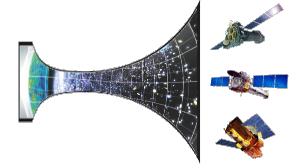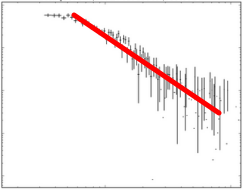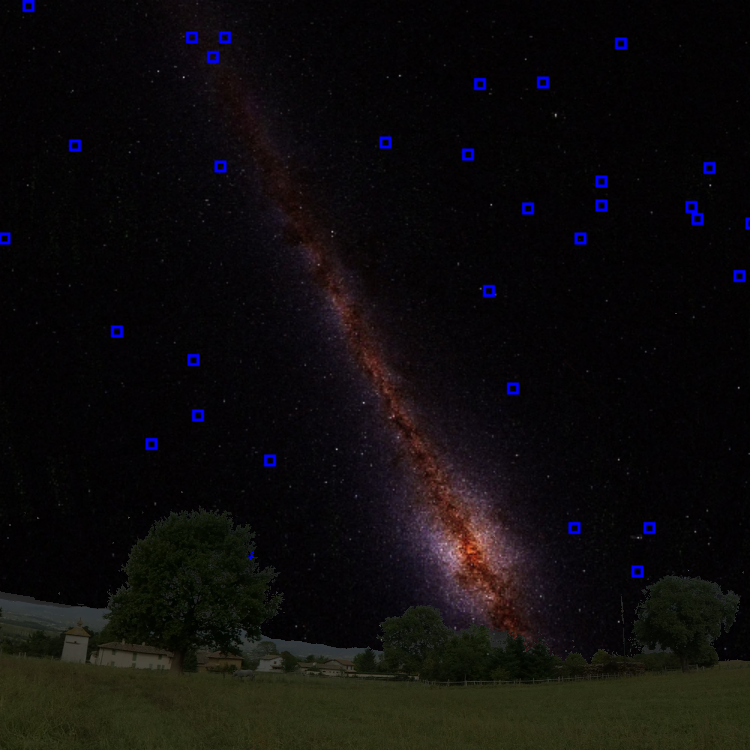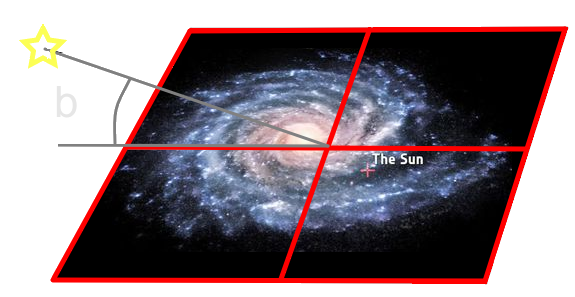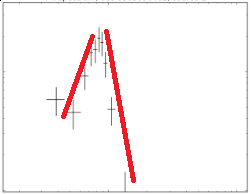CLAXSON interactive tutorial
You are viewing the full version.
Welcome to this interactive tutorial! 🙂
Here you will learn 2 things:
• Some science behind the classification of X-ray sources
• How you can classify X-ray sources on this website
Here you will learn 2 things:
• Some science behind the classification of X-ray sources
• How you can classify X-ray sources on this website
↓↓ Scroll down ↓↓
Let's start with the science! No worry, we will just answer 1 question... what is exactly an X-ray source?
X-rays are a very energetic kind of light (1 X-ray photon has roughly 100 times the energy of the photons composing optical light, the light we can see with our eyes). In everyday life they are the rays crossing your body when you go for an « X-ray », but also some of the radiation detected by Geiger counters when the toxicity of a radioactive place is assessed.
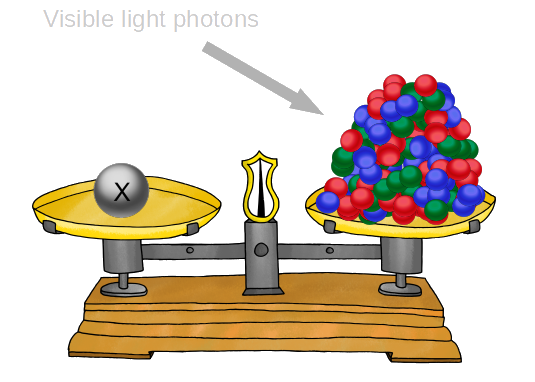

When astronomers first sent X-ray detectors into space in 1962, they expected to see a quiet dark sky, with no other source than our Sun. By contrast, they discovered that the X-ray sky is incredibly rich: they saw some faintly glowing dots at the very place where optical images showed the presence of stars, meaning that stars can also be strong emitters of X rays. Some other unknown objects were very bright in X-rays: they were later called X-ray binaries, after scientists showed that they were composed of a stellar remnant (i.e. a white dwarf, a neutron star or a black hole, remaining after the collapse of a star) being fed by a nearby star. These objects were the first clues that black holes exist, thanks to the detection of the X-ray source Cygnus X-1 in 1971.
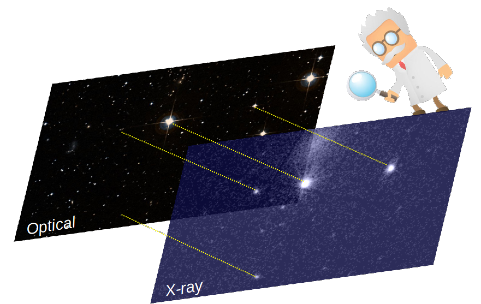

So, X-ray sources are stars and X-ray binaries. That’s it? No! When radio astronomy commenced in the 1950s, astronomers detected, among the galaxies, a small number of anomalous objects with properties that defied explanation. Later called quasars, they were proved to emit light across the entire electromagnetic spectrum, from X-rays to radio waves. Quasars are an example of the so-called « active galactic nuclei » (AGN), composed of a supermassive black hole (a million to a billion times the mass of our Sun!) with a hot disk of matter spinning around it and being progressively swallowed by the black hole. Nowadays, AGN are by far the most common sources we find in X-ray surveys.
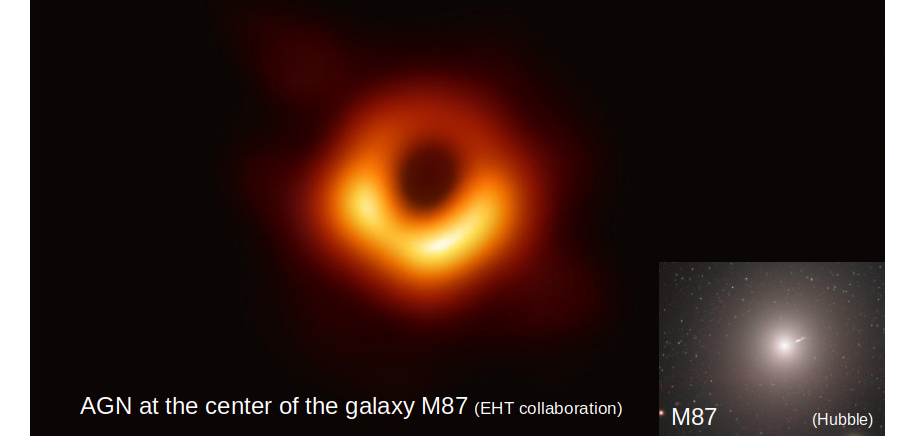

AGN, stars and X-ray binaries are thus the three main kinds of X-ray sources. But it happens, sometimes, that some of the objects don't fall into any of these categories: bubbles of very hot gas surrounding a group of galaxies, supernovae (violent explosions when a massive star dies), gamma-ray-bursts (the most violent explosions we know, yet to be fully explained...), tidal disruption events (a star destroyed and swallowed by a black hole), etc. Despite the effort invested into automatically classifying X-ray sources (e.g. with machine learning), this is not so easy, so many of the identifications have to be done manually, a difficult job to do when there are hundreds of thousands of these objects! Once thousands of objects of each type of X-ray source have been identified, a large « training sample » can be constructed and machine learning algorithms will be able to identify the remaining sources more reliably. The first step is then to classify as many of the X-ray sources as possible, and that’s the goal of this website. Previous experiments of citizen science showed that a crowd of citizens can be as reliable as an expert, after a little training.


→ So now, it's time for training! Let's begin with a quizz. 😉
The criteria you will learn in the following are generalisations, there are no hard and fast rules. Training is the only way to get good at source classification.
A long time ago in a galaxy far, far away...
Somehow, and nobody really knows how exactly, a black hole as massive as a million Suns (but just a few times the size of the Sun) formed at the center of the galaxy. Once there, a particular phase of its life began: every once in a while (say every million year) the matter surrounding the black hole started to spiral inwards, forming a disk heated to extremely high temperatures (several million degrees!) being progressively swallowed ("accreted") by the black hole. Part of the matter was ejected during the process, in the form of giant jets spreading accross (even beyond) the galaxy. And after 10 million years of this extreme explosive scenario, producing enormous amounts of light particularly in X-rays, the black hole became quiet and invisible, except for the rare times when a star came too close and got ripped apart and swallowed.
This story is the current picture we have of active galactic nuclei (AGN), the supermassive black holes we see thanks to their accretion disks, at the center of about 1 % of known galaxies. Nowadays we think that most sources that emit in X-rays – and thus most of the objects you will see and classify – correspond to AGN. Now can you guess how we can recognize them, thanks to the description above ?
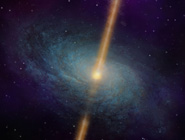
This story is the current picture we have of active galactic nuclei (AGN), the supermassive black holes we see thanks to their accretion disks, at the center of about 1 % of known galaxies. Nowadays we think that most sources that emit in X-rays – and thus most of the objects you will see and classify – correspond to AGN. Now can you guess how we can recognize them, thanks to the description above ?

AGN are brighter in :
Given that they emit broadly in all « colors » of the X-rays (called soft, medium and hard), what kind of spectrum (=intensity of light at different X-ray « colors ») do you expect more?
How does their light evolve?
Knowing that they are located in other galaxies, do you expect to see them more often...
Additionally since they also emit optical and infrared light in reasonable proportion , their X-ray flux is never less than one tenth and never more than ten times their optical (also infrared) flux. loXO and loXI - logarithm of the ratio [X-ray flux] over [optical or infrared flux] - are thus between -1 and 1.
The second most common type of X-ray sources are... stars. Stars are big balls of plasma (very hot gas) consisting mostly of hydrogen and helium. They emit a lot of soft X-rays when they are much more massive than our Sun, because of violent storms in their surroundings, or significantly less massive, because of very strong magnetic fields heating their corona. What we call "very hot" here is between about 2000 and 30 000°C, so it is way colder than AGN disks! These temperatures mean they shine mostly in infrared and optical light. To be visible in X-rays, they have to be close to us, to belong to our own Galaxy. Let's try to deduce some rules of thumb to recognize them here.


Star are brighter in :
What kind of spectrum (=intensity of light at different X-ray « colors ») do you expect more?
Some stars are called "variable stars", when various processes cause their luminosity to vary rapidly, but most stars have a pretty constant luminosity. How will be their light curve?
Do you expect to see them more often...
As we said previously, stars are especially bright in optical and infrared: for instance they emit at least 100 times more energy in optical light and 30 times more in infrared than in X-rays. Consequently, loXO is below -2 and loXI is below -1.5 .
Ok, if you got this far, you're almost there! The last sources we will study together are rarer and quite special. We call them "X-ray binaries", and they are dubbed this way because they actually consist of 2 objects and they emit X-rays (astronomers are so original...): a small, very dense object (either a neutron star or a small black hole) swallows matter from a bigger star, a bit like what happens in an AGN, but much smaller in size. Like AGN, they are much brighter in X-rays. Sometimes it is the only kind of light they send us. But since they are way lighter than AGN, they are less luminous and more affected by violent processes, so their luminosity can change more rapidly and dramatically. X-ray binaries can be observed both in our Galaxy and in other galaxies, when they are close enough.
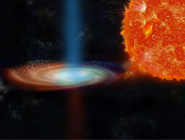

X-ray binaries are brighter in :
What kind of spectrum do you expect more?
How will be their light curve?
Do you expect to see them...
Because of the numerous states they can take, X-ray binaries can have a wide range of loXO and loXI, between -3 and 3. But very often, these quantities are unknown, because we do not manage to measure their optical or infrared flux (too faint or too polluted by nearby sources).
Congratulations!
You finished the quizz, you are now ready to classify several kinds of X-ray sources. However, there are also some very rare objects that do not fall into any of these categories, such as other types of binaries called cataclysmic variables, X-ray "transients" which emit a flash of X-rays and then disappear (supernovae, gamma-ray bursts, tidal disruption events), hot gas in galaxy clusters, etc. When you are classifying AGN, stars and X-ray binaries, if you see something unusual, maybe it is one of these rare objects, and you can label it as "something else".
Should you have a doubt, do not hesitate to do the quizz again. But as we said at the beginning, training, making mistakes and understanding them is the best way to learn. So thank you for participating and enjoy our "high-energy Universe"! 😄
Should you have a doubt, do not hesitate to do the quizz again. But as we said at the beginning, training, making mistakes and understanding them is the best way to learn. So thank you for participating and enjoy our "high-energy Universe"! 😄
